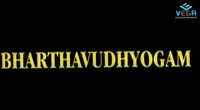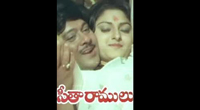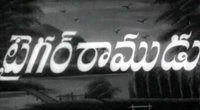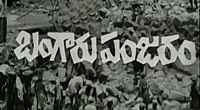Battle Royale (????????? Batoru Rowaiaru) is a 2000 Japanese dystopian thriller film adapted from the 1999 novel of the same name by Koushun Takami. It was the final film directed by Kinji Fukasaku. It stars Tatsuya Fujiwara, Aki Maeda and Takeshi Kitano. The film follows a group of junior high schoolers forced to fight to the death by the Japanese government. The film drew controversy and was banned or excluded from distribution in several countries. Toei even refused to sell the film to any United States distributor for a long time, because Toei was worried of potential controversy and lawsuits (until Anchor Bay Entertainment eventually acquired the film in 2010 for direct-to-video release).
| Battle Royale | |
|---|---|
Theatrical release poster | |
| Directed by | Kinji Fukasaku |
| Produced by | Masao Sato Masumi Okada Teruo Kamaya Tetsu Kayama |
| Screenplay by | Kenta Fukasaku |
| Based on | Battle Royale by Koushun Takami |
| Starring | Tatsuya Fujiwara Aki Maeda Takeshi Kitano Chiaki Kuriyama Tar? Yamamoto Masanobu And? Kou Shibasaki |
| Music by | Masamichi Amano |
| Cinematography | Katsumi Yanagishima |
| Edited by | Hirohide Abe |
Production company | Battle Royale Production Committee |
| Distributed by | Toei Company |
Release date |
|
Running time | 113 minutes |
| Country | Japan |
| Language | Japanese |
| Budget | $4.5 million |
| Box office | $25.9 million (worldwide) ¥3.11 billion (Japan) |
The film was first screened in Tokyo on more than 200 screens on December 16, 2000, with an R-15 rating, which is rarely used in Japan, and during the first weekend it grossed ¥212 million ($1.8 million). It was also the highest-grossing Japanese-language film for six weeks after its initial release, and it was later released in 22 countries worldwide, grossing $25,895,894. It received a global audience and critical acclaim. It is often regarded as one of Fukasaku's best films, and one of the best films of the 2000s. In 2009, filmmaker Quentin Tarantino praised Battle Royale as the best film he had seen in the past two decades.
Fukasaku started working on a sequel, Battle Royale II: Requiem, but he died of prostate cancer on January 12, 2003, after shooting only one scene with Takeshi Kitano. His son Kenta Fukasaku, who wrote the screenplay for both films, completed the film in 2003.
Battle Royale has been influential in global popular culture. Since the film's release, the term "battle royale" has been used to refer to a fictional narrative genre and/or mode of entertainment inspired by the film, where a select group of people are instructed to kill each off until there is a triumphant survivor. It has inspired numerous media, including films, manga, anime, comics, visual novels, and video games; the battle royale game genre, for example, is named after the film.
Screenplay
Following a major recession, the Japanese government has passed the "BR ACT” to control Japan's unruly youth. Middle school student Shuya Nanahara copes with life after his father committed suicide. Noriko Nakagawa is the only student regularly attending class 3-B. Their teacher, Kitano, resigns after being wounded by a student.
One year later, class 3-B takes a field trip, but they are gassed and taken to a remote island. Kitano reappears surrounded by JSDF soldiers, explaining to the class that they are chosen to participate in the annual Battle Royale as a result of the Act: they have three days to fight to the death until a victor emerges, while explosive collars will kill uncooperative students or those within daily "danger zones". Each student is provided rations, water, a map of the island, compass, and a random weapon. Kitano personally kills two of the students for disobedience, one of them being Shuya's best friend Yoshitoki Kuninobu.
The first six hours see twelve deaths, four by suicide, and most caused by the desperate, psychotic Mitsuko Souma and psychopathic volunteer Kazuo Kiriyama. Transfer student Shogo Kawada lets Shuya go, while basketball player Shinji Mimura plots to hack into the military's computer system to disrupt the program. Amid shifting loyalties and violent confrontations, Shuya promises to keep Noriko safe as Yoshitoki secretly loved her. He carries her to a clinic, where Kawada reveals that he won a previous Battle Royale at the cost of his girlfriend, Keiko Onuki, whose death he seeks to avenge. When Kiriyama attacks, Shuya entrusts Kawada to protect Noriko and runs as a distraction. Although saved by Hiroki Sugimura, a martial artist looking for Kayoko Kotohiki, Shuya is wounded.
Shuya awakens in the island's lighthouse, bandaged by female class representative Yukie Utsumi, who has a crush on him. Five other girls are also hiding in the building, including Yuko Sakaki, who attempts to poison Shuya out of fear for Tatsumichi Oki who she saw die and believes that Shuya had killed him, only for Yuka to accidentally eat the food. Yuko is the only survivor of the ensuing shootout; horrified, she apologizes to Shuya and commits suicide. Shuya returns to Noriko and Kawada, and they set out to find Mimura. Kiriyama kills Mitsuko. Mimura and two others, Yutaka Seto and Keita Iijima, infiltrate the military's computer system, but Kiriyama kills them. When Kawada, Noriko and Shuya arrive at the hackers' burning base, Kawada confronts and kills Kiriyama, who had been blinded by an explosion rigged by Mimura as he was killed.
On the morning of the final day, Kawada, aware of the collars' internal microphones, seemingly kills Shuya and Noriko. Suspicious, Kitano ends the game and dismisses the troops, intent on personally killing the supposed victor. Kitano realizes that Kawada hacked the system months beforehand, and has disabled Shuya and Noriko's tracking devices. The three survivors confront Kitano in the headquarters, and he unveils a homemade painting of the massacred class depicting Noriko as the sole survivor. He reveals that he was unable to bear the hatred between him and his students, having been rejected by his daughter, and confesses that he always thought of Noriko as a daughter. He asks her to kill him, but Shuya shoots him after he threatens her with a gun. As he falls, Kitano shoots, revealing the gun to be a water pistol. Before he dies, Kitano's daughter calls him; after an argument, he shoots the phone with an actual gun.
Shuya, Noriko and Kawada leave the island on a boat, but Kawada dies from injuries, happy that he found friendship. Shuya and Noriko are declared fugitive murderers, and are last seen on the run in the direction of Shibuya Station. Noriko gives Shuya a Seto Dragon Claw butterfly knife before they run off together.
Main
- Tatsuya Fujiwara as Shuya Nanahara
- Aki Maeda as Noriko Nakagawa
- Tar? Yamamoto as Shogo Kawada
- Masanobu And? as Kazuo Kiriyama
- Kou Shibasaki as Mitsuko Souma
- Chiaki Kuriyama as Takako Chigusa
- Takashi Tsukamoto as Shinji Mimura
- Sousuke Takaoka as Hiroki Sugimura
- Eri Ishikawa as Yukie Utsumi
- Hitomi Hyuga as Yuko Sakaki
Supporting
- Takeshi Kitano as Kitano
- Yukihiro Kotani as Yoshitoki Kuninobu
- Sayaka Ikeda as Megumi Eto
- Takayo Mimura as Kayoko Kotohiki
- Minami as Keiko Onuki
- Y?ko Miyamura as Training Video Girl
Casting
Roughly 6,000 actors auditioned for the film, which was narrowed down to 800 potential cast members. These finalists were subjected to a 6-month period of physical fitness training under supervision of the director, Kinji Fukasaku, who eventually cast 42 out of the 800.
Despite the characters being middle school students, Aki Maeda, Yukihiro Kotani, Takayo Mimura, Yukari Kanasawa were the only four who were aged 15 to 16 years old. The other members of the cast had all graduated from secondary education, and Tar? Yamamoto and Masanobu And? were the oldest among the actors, aged 25.
Creative process
Kinji Fukasaku stated that he decided to direct the film because the novel it was adapted from reminded him of his time as a 15-year-old munitions factory worker during World War II. At that time, his class was made to work in a munitions factory. In July 1945, the factory came under artillery fire. The children could not escape so they dived under each other for cover. The surviving members of the class had to dispose of the corpses. At that point, Fukasaku realised that the Japanese government was lying about World War II, and he developed a burning hatred of adults in general that he maintained for a long time afterwards.
Beat Takeshi told a documentary crew during filming that he believes "an actor's job is to satisfy the director... I move the way I'm told to. I try to look the way I'm told to. I don't know much about the emotional side", before adding, "Mr. Fukasaku told me to play myself. I did not really understand, but he told me to play myself, as I ordinarily would be! I'm just trying to do what he tells me."
When asked in an interview with The Midnight Eye if the film is "a warning or advice to the young", Kinji Fukasaku responded by describing the words "warning" and "advice" as "sounding very strong to me" as if they were actions which one tries to accomplish; therefore the film would not be "particularly a warning or advice." Fukasaku explained that the film, which he describes as "a fable", includes themes, such as crime by young people, which in Japan "are very much real modern issues." Fukasaku said that he did not have a lack of concern or a lack of interest; he used the themes as part of his fable. When the interviewer told Fukasaku that he asked the question specifically because of the word "run" in the concluding text, which the interviewer described as "very positive", Fukasaku explained that he developed the concept throughout the film. Fukasaku interpreted the interviewer's question as having "a stronger meaning" than "a simple message." He further explained that the film simply contains his "words to the next generation", so the viewer should decide whether to take the words as advice or as a warning.
Music
The film score of Battle Royale was composed, arranged and conducted by Masamichi Amano, performed by the Warsaw Philharmonic Orchestra and features several pieces of Western classical music along with Amano's original compositions. The choral movement used in the film's overture and original trailer is the "Dies Irae" from Giuseppe Verdi’s Requiem.
The song used during the end credits, "Shizuka na Hibi no Kaidan o" by the rap rock band Dragon Ash, is not included in either the Japanese or French edition of the soundtrack.
| Battle Royale Original Soundtrack | |
|---|---|
| Soundtrack album by Masamichi Amano and the Warsaw Philharmonic Orchestra | |
| Released | December 20, 2000 |
| Recorded | October 5–6, 2000 |
| Genre | Classical, Soundtrack |
| Length | 71 minutes |
| Label |
|
- Track listing
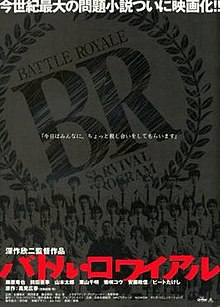 Story of movie Battle Royale Film :
Story of movie Battle Royale Film :


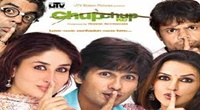
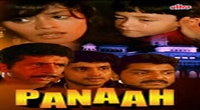

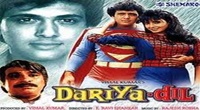
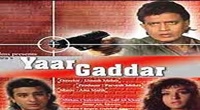
.jpg)
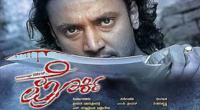
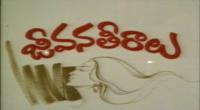
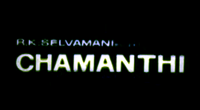
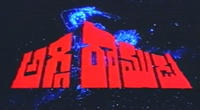
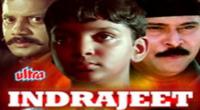

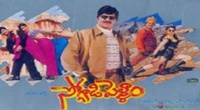

.jpg)
